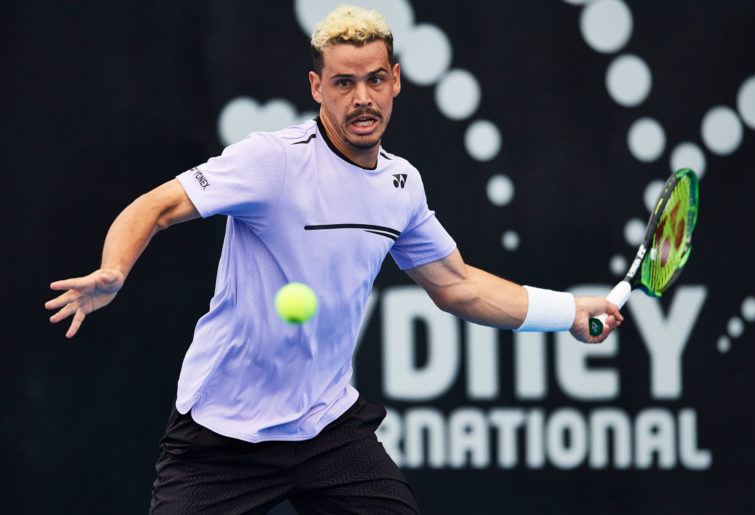JackJumpers' NBL title was special - but where does it sit among Tasmania’s top ten sporting moments?
It’s a pretty good time to be a Tasmanian sports fan right now. After years in the sporting wilderness with not much to celebrate,…
Opinion
In Part 1, I covered the form of all direct male entries into the Australian Open and suggested that – judged on their ranking and those of their opponents – all had performed well.
So it was with the Australian wild card recipients into the men’s draw. Tennis Australia played it straight down the line with the issue of wild cards. With the top six players in the Australian rankings entitled to direct entry into the Australian Open, the five wild cards went to the players ranked seven, eight, nine and ten plus John-Patrick Smith, the winner of the wild card selection tournament conducted late in 2019.
The seventh-ranked Aussie Christopher O’Connell had done a massive job in 2019, playing in more tournaments than any other player on the circuit and lifting his world ranking from well above 1000 to 119. Unfortunately, luck was not on his side, and although he won the second set impressively (6-0) and lost a tight fourth set tie break, he was no match for the tournament’s 17th seed Russian Andrey Rublev, who was ranked over 100 places above him.
Number eight Aussie Marc Polmans (ranked 133) won a tough five-setter against world number 68, Kazakhstan’s Mikhail Kukushkin in the first round, but was soundly beaten by the tournament’s 24th seed in Round 2.
Alex Bolt was ranked number nine among the Aussies, due mainly to his performance in reaching Round 3 of the 2019 AO, and looked on track to repeat the performance this year with a tight first-round five-set performance against former French Open quarter-finalist Albert Ramos Vinolas and a two-sets-to-one lead against the eventual AO finalist Dominic Thiem before his game fell away.

(Photo by Brett Hemmings/Getty Images)
Andrew Harris, whose main claim to fame was partnering with Nick Kyrgios to two junior grand slam titles with top-eight finishes in the other two, was another player who lucked out, drawing eighth seed Matteo Berrettini in Round 1 and suffering a convincing loss.
John-Patrick Smith, whose ranking among the Australian men was a lowly number 20 and internationally in the 300s, did well to earn entry into the tournament by winning the wild card playoff but also struck a seed (22) in Round 1 and was beaten in straight sets with a game break in each.
The women’s singles performances – when compared to the men – were disappointing, both in quantity and quality. With only four women gaining direct entry into the main draw, and only three wild cards issued to Australian women, the total contingent of seven contested the first round, with four moving through to Round 2.
Sam Stosur – a wonderful ambassador for Australian tennis since her first appearance in a grand slam tournament in the Australian Open in 2002 – continued her horror run in the singles, being beaten in the first round for the fifth year in a row despite still having a ranking in the top 100 at age 35.
The other three direct entry players all won through to the second round with the Australian public gradually warming to the fighting qualities of Ajla Tomljanovic, who demolished the 31st seed in Round 1 before taking the eventual runner-up in the tournament to three sets in Round 2. Prescilla Hon had a convincing win over a player ranked 42 places higher than her before she too ran into a seeded player in Round 2.
The seed curse continued with Arina Rodionova, who justified Tennis Australia’s decision to grant her a wild card by coming from a set down to win her first-round match before falling to the tournament’s ninth seed in Round 2.
So by the end of Round 2, our seven women’s singles competitors had been reduced to one. Top seed Ash Barty carried the hopes of all Australians as she worked her way past five opponents in a mixed display of sometimes brilliant and sometimes gritty tennis to earn a semi-final berth against the eventual winner.
A semi-final berth had not been earned by an Australian woman for over two decades and her effort added to her already growing reputation as a champion player as well as a champion person. While the Australian Open 2020 was not to be, Barty showed that she can mix it with the best, and hopefully we are going to witness many successful challenges for grand slam titles over the next decade.
The doubles, both men’s and mixed, provided highlights for the Aussie fans, who witnessed outstanding efforts by men’s doubles quarter-finalists John Duckworth and Marc Polmans and the scratch pair of Max Purcell and Luke Saville, who also gained a wild card and made it all the way through to the men’s doubles final.
In the mixed doubles, John-Patrick Smith and Astra Sharma lost the first set of their quarter-final effort before coming back to claim a semi-final spot and a place in the history of the Australian Open.